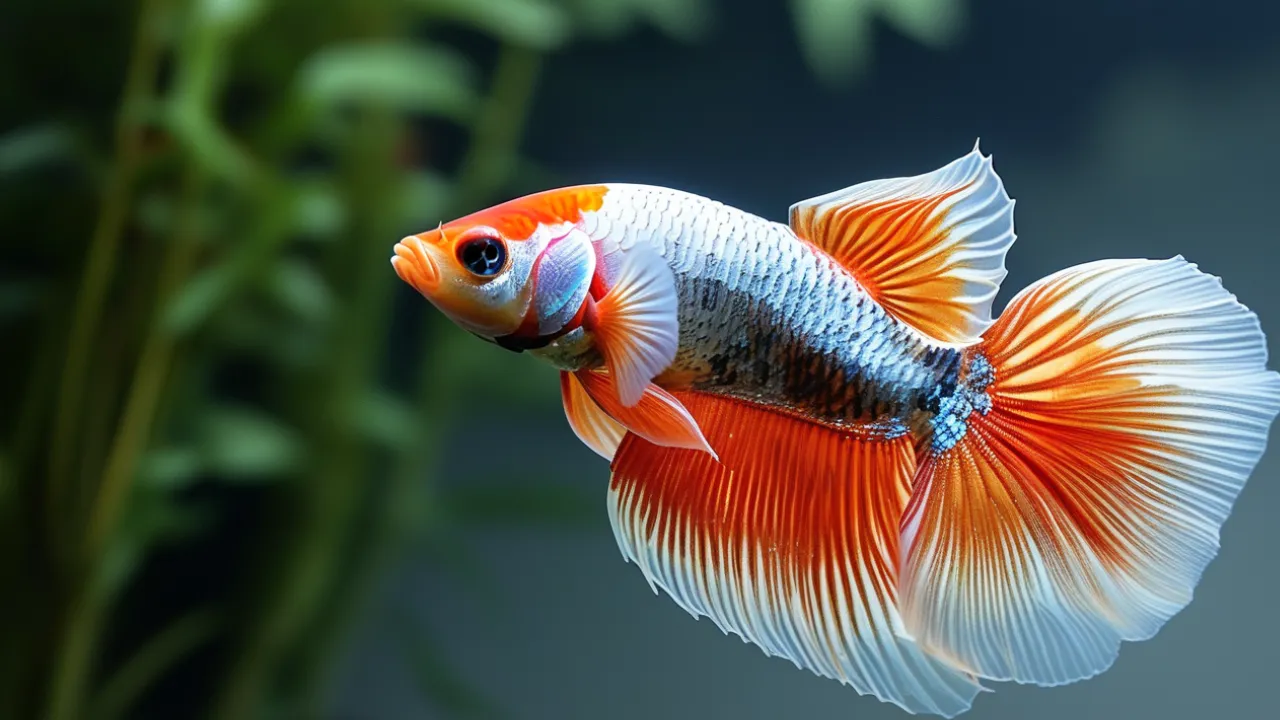The Koi Betta Fish stunning betta variety has gained immense popularity among aquarists for its mesmerizing beauty and unique characteristics.
In this Betta Fish Guide, we’ll dive deep into the world of koi betta fish, exploring everything from their care requirements to the fascinating differences between male and female specimens.
What Are Koi Betta Fish?
Koi betta fish are a beautiful variant of the Betta splendens, often characterized by their vivid patterns resembling those of koi fish. Their scales can exhibit a mix of colors, including reds, whites, and blacks, creating a mesmerizing display in any aquarium.
The Origin of Koi Betta Fish
Koi betta fish originated from selective breeding practices that aimed to replicate the beautiful colorations found in traditional koi fish. This practice has gained popularity among fish enthusiasts, leading to the development of various strains, including the tangerine koi betta and copper koi betta.
Koi Betta Characteristics and Varieties
Understanding Koi Patterns
Koi bettas are characterized by their marbled patterns, which typically consist of two or more colors distributed in an irregular, patchy manner across the body and fins. The base color is often white or flesh-toned, with patches of vibrant colors overlaying it.
Popular Koi Betta Varieties
- Tangerine Koi Betta: These fish feature a stunning combination of orange and white, often with black accents.
- Copper Koi Betta: Known for their metallic sheen, copper koi bettas display a mix of copper, white, and often red or blue tones.
- Galaxy Koi Betta: These fish exhibit a starry pattern with spots and speckles, often in blue or black, over a light-colored base.
- Nemo Koi Betta: Named after the famous clownfish, these bettas feature orange and white patterns reminiscent of Nemo’s coloration.
The Genetics Behind Koi Patterns
The koi pattern in bettas is the result of complex genetic interactions. It’s believed to be influenced by the marble gene, which causes color changes throughout the fish’s life. This genetic instability means that koi bettas can change their patterns over time, adding an element of surprise for their owners.
Caring for Your Koi Betta Fish
Tank Setup and Water Parameters
Koi bettas, like all betta, require specific care to thrive:
- Tank Size: A minimum of 5 gallons for a single betta
- Temperature: 78-80°F (25-27°C)
- pH: 6.5-7.5
- Filtration: Gentle flow to avoid stressing long fins
- Decor: Live or silk plants, hiding spots, and smooth surfaces
Feeding Your Koi Betta
A balanced diet is crucial for maintaining the vibrant colors of koi bettas:
- High-quality betta pellets as a staple
- Frozen or live foods like bloodworms, brine shrimp, and daphnia as treats
- Feeding 2-3 times daily in small amounts
Common Health Issues and Prevention
Koi bettas can be susceptible to various health issues:
- Fin Rot: Caused by poor water quality or injury
- Ich: A parasitic infection characterized by white spots
- Swim Bladder Disorder: Often related to overfeeding or constipation
Regular water changes, proper nutrition, and maintaining optimal water parameters are key to preventing these issues.

Breeding Koi Betta Fish
Selecting Breeding Pairs
When breeding koi bettas, choose healthy, vibrant fish with desirable patterns. Remember that the marble gene can cause unpredictable color changes in offspring.
The Breeding Process
- Condition the breeding pair with high-quality foods
- Set up a separate breeding tank with shallow water and plenty of hiding spots
- Introduce the female to the male’s territory under supervision
- After spawning, remove the female to prevent aggression
- The male will care for the eggs and fry initially
Raising Koi Betta Fry
Raising koi betta fry requires patience and dedication:
- Feed newly hatched brine shrimp or commercial fry food
- Perform frequent small water changes
- Gradually increase food size as the fry grow
- Be prepared for color changes as the fry develop
Koi Betta Fish in the Aquarium Hobby
The Appeal of Koi Bettas to Enthusiasts
Koi bettas have gained immense popularity due to their unique patterns and the element of surprise they offer. Many hobbyists enjoy documenting the color changes of their koi bettas over time.
Ethical Considerations in Breeding
As with all selective breeding, there are ethical considerations to keep in mind:
- Avoid breeding for extreme traits that may compromise the fish’s health
- Prioritize the overall health and well-being of the fish over aesthetics
- Support responsible breeders who prioritize fish welfare
Conclusion
Koi betta fish represent a fascinating intersection of art and science in the aquarium hobby. Their stunning patterns and ever-changing colors make them a joy to observe and care for. By providing proper care and understanding their unique characteristics, you can enjoy the company of these beautiful creatures for years to come.
Whether you’re drawn to the vibrant hues of tangerine koi bettas or the metallic sheen of copper koi bettas, these fish offer a world of wonder in your home aquarium. Remember that each koi betta is unique, and part of the excitement is watching how their colors and patterns may change over time.
As you embark on your journey with koi bettas, always prioritize the health and well-being of your fish. With the right care, your koi betta will reward you with its beauty, personality, and the endless fascination that comes with keeping these remarkable aquatic jewels.

Related Posts
Male Dumbo Halfmoon Betta: Fish Tank Guide
The Enchanting World Of Blue Marble Betta – Betta Fish Guide
Female Betta Fish Types:Types & Temperaments